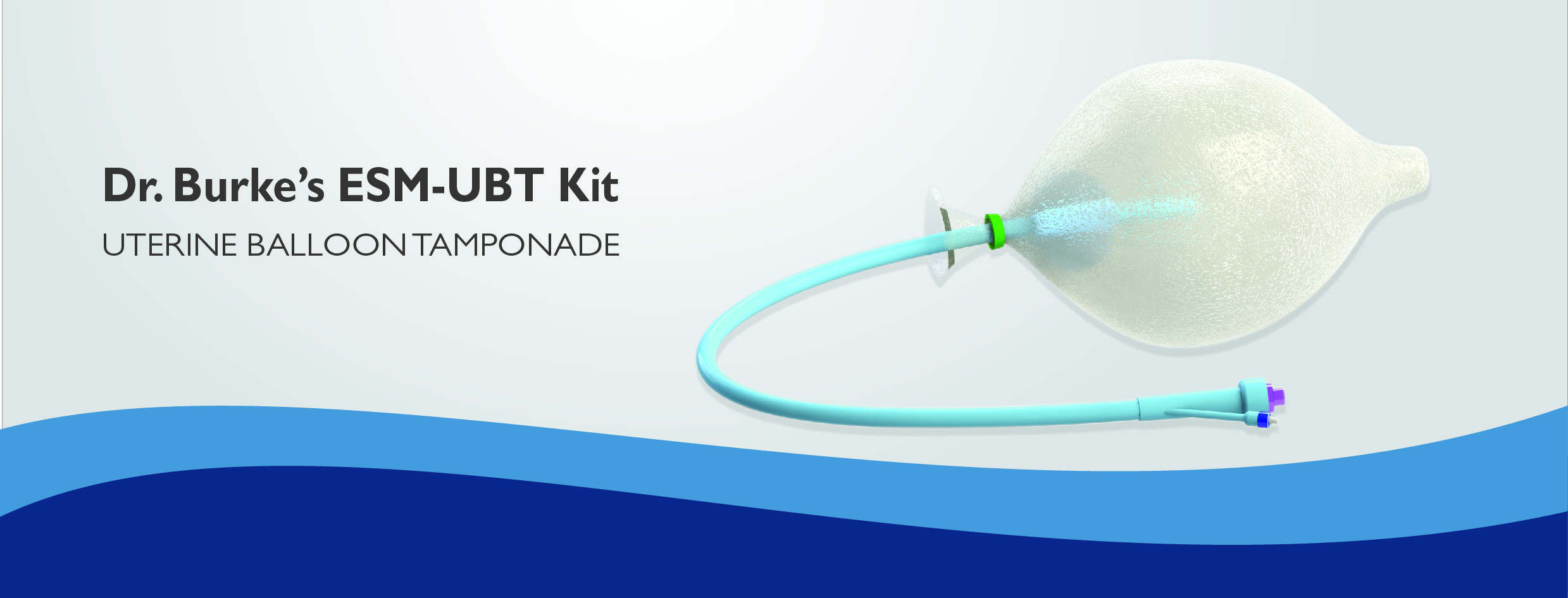Maternal death and disability is the greatest health disparity on earth between the poor and those that are fortunate to live in prosperity. It is estimated that 2.8 million women annually either lose their lives or become injured from pregnancy related causes, with postpartum hemorrhage (PPH) being the most common reason. The majority of our world’s pregnant women that lose their lives each year, live in India. Through integration and bundling of the award-‐winning innovation, “Every Second Matters for Mothers and Babies -‐ Uterine Balloon Tamponade” (ESM-‐UBT) package into the clinical practice of maternal care, postpartum hemorrhage deaths and disabilities in India can be averted. Over 90% of all of these deaths occur in low resource settings, where adequate equipment and /or training might not be available to manage the issue.
ESM UBT: The ESM-‐UBT package is ultra-‐low-‐cost, easy to use, safe and highly cost-‐effective. It is designed to address the number one killer of pregnant women in the world. The ESM-‐UBT device rapidly halts blood loss in women suffering from uncontrolled PPH. One of the most effective ways to manage the issue is a Uterine Balloon Tamponade device (UBT) which presses against the inner walls of the uterus to halt the excessive bleeding.
Introduction of ESM-‐UBT in India: Since 2012, the WHO PPH guidelines have recommended use of uterine balloon tamponade for uncontrolled PPH. Since 2015, condom uterine balloon tamponade has been integrated into the National Policy of India as best practice care for treatment in PPH.
Pregna International Ltd. has teamed up with Dr. Thomas Burke (Harvard University) Vayu Global Health Foundation to introduce the ESM UBT kit.
The intervention involves inserting a balloon into the uterus and then filling the balloon with liquid, which applies pressure to the uterus until the bleeding stops. Effective treatment occurs rapidly within 5 to 15 minutes after insertion and inflation of the balloon
Even when UBT cannot completely control severe PPH, it serves a critical role by reducing blood loss until the woman can be transported to a facility with surgical and other treatment options.
At a time when every second matters, Dr. Burke’s ESM-UBT kit eliminates the time required in procuring the required components.
It reduces the expense of assembling, procuring and reprocessing the components from various sources
Single use device reduces the risk of cross-contamination
Effective in rapid treatment of PPH, within 5 to 15 minutes after insertion and inflation
Each kit is assembled with all components required to adequately handle PPH, making it suitable even for low-resource settings
With all the components packed in an easy to store kit, it increases the efficacy of medical staff in the event of an emergency
The compactness of the kit allows it to be easily carried from one location to another
Easy to assemble with minimal training required.
| Uterine Balloon Tamponade |
|---|
| Effective in rapid treatment of Postpartum Bleeding |
| Single use device reduces the risk of cross contamination |
| Easy to assemble with minimal training required |
| Majority of deaths are preventable |
Postpartum hemorrhage is more bleeding than normal after the birth of a baby. About 1 in 100 to 5 in 100 women have postpartum hemorrhage. It is more likely with a cesarean birth. It most often happens after the placenta is delivered, but it can also happen later.
- Tear in the cervix or tissues of the vagina
- Tear in a blood vessel in the uterus
- Bleeding into a hidden tissue area or space in the pelvis. This mass of blood is called a hematoma. It is usually in the vulva or vagina.
- Blood clotting disorders
- Placenta problems
- Placental abruption. This is the early detachment of the placenta from the uterus.
- Placenta Previa. This is when the placenta covers or is near the opening of the cervix.
- Over distended uterus. This is when the uterus is larger than normal because of too much amniotic fluid or a large baby.
- Multiple-baby pregnancy
- High blood pressure disorders of pregnancy
- Having many previous births
- Prolonged labor
- Infection
- Obesity
- Use of forceps or vacuum-assisted delivery
- Being of Asian or Hispanic ethnic background

